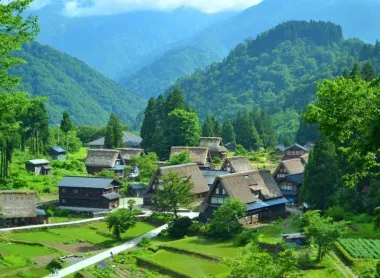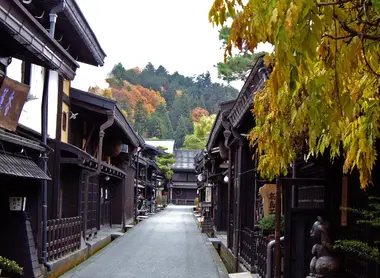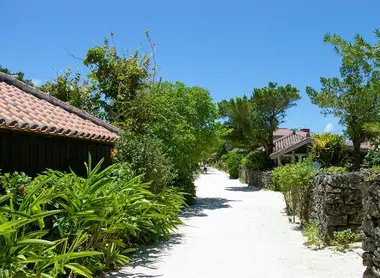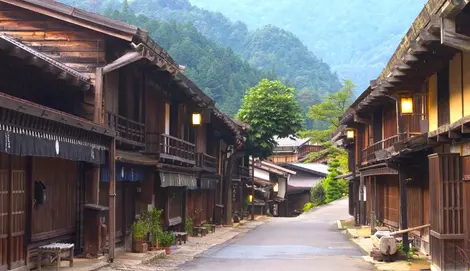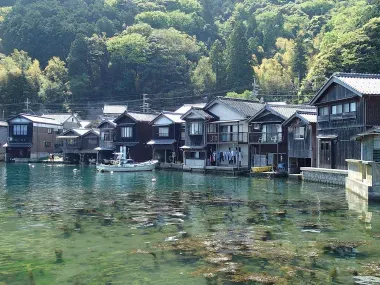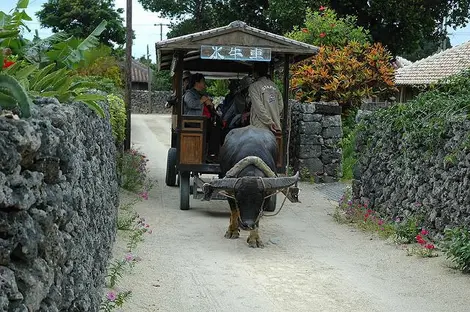Discover Japan's most beautiful traditional villages
Japan is often associated with its large futuristic cities like Tokyo, but there are also many traditional villages that offer a journey back in time and an immersion in authentic Japanese culture. These unspoilt villages offer a glimpse of rural Japan, far removed from urbanization and steeped in ancestral traditions. Visiting these villages is an opportunity to enjoy beautiful walks, interact with the locals and dine in picturesque restaurants handed down for generations.
Shirakawa-go, the thatched village in the Japanese Alps
Nestled in the heart of the Japanese Alps in Gifu Prefecture, Shirakawa-go is one of Japan's most famous traditional villages. Listed as a UNESCO World Heritage Site along with the neighboring village of Gokayama, it is renowned for its traditional thatched houses called gasshō-zukuri (合掌造り). Over 100 of these old farmhouses have been preserved, some transformed into museums or inns for an unusual overnight stay. In winter, the village takes on an unreal beauty under a thick blanket of snow. Shirakawa-go welcomes over 1.5 million visitors a year and is easily accessible by excursion from the cities of Nagoya or Kanazawa. Read our full article to prepare your visit.
Takayama, Gifu Prefecture's "Little Kyoto
Not far from Shirakawa-go, the ancient town of Takayama has preserved its atmosphere of yesteryear, with narrow streets lined with traditional wooden houses, temples and a morning market. Known as "Little Kyoto" for its historic charm, the town is famous for its handicrafts, particularly Shunkei lacquerware and sarubobo, a lucky charm in the shape of a baby monkey. Thatched rural houses can also be seen in the Hida no Sato district. The Takayama Autumn Festival, with its parade of decorated yatai floats, is one of the 3 most beautiful matsuri in Japan.
Ine, one of the last traditional fishing villages
Located north of Kyoto along the Sea of Japan, Ine is a picturesque fishing village famous for its funaya (舟屋) houses. These unique buildings, with their second floor open to the sea, were used to park fishing boats, while the living quarters are upstairs. The funaya stretch along the bay for around 5 km, offering an atypical landscape. Today, some of the houses are restaurants or lodgings, allowing visitors to immerse themselves in the traditional life of the fishermen. Ine is one of the few remaining villages of this type in Japan.
Tsumago, the old stopover town on the Nakasendo road
Tsumago lies in the Kiso valley, on the old Nakasendo trade route that linked Kyoto to Edo (Tokyo) during the eponymous period (1603-1868). The village served as a stopover for travellers, who rested in its many inns. It has been preserved in its original state, with wooden buildings, cobbled streets and no visible power lines. Cars are not allowed during the day. A beautiful walk through the forest takes you to Magome, the next stop on the historic route.
Ouchi-juku, the beautiful village of yesteryear in Fukushima Prefecture
Ouchi-juku was a stopover town on the old Aizu Nishi Kaido road during the Edo period. Its well-preserved thatched houses are well worth a visit, especially in winter when snow covers the landscape. Today, the historic buildings house craft stores and restaurants serving local specialties such as soba (buckwheat noodles) and grilled trout. The Snow Lantern Festival at the end of January is very popular. A real plunge into feudal Japan!
Kayabuki no Sato, a timeless escape north of Kyoto
North of Kyoto, the village of Kayabuki no Sato in Miyama is home to dozens of thatched farmhouses over 600 years old. Relatively untouched by mass tourism, this small rural village seems frozen in time. You can stroll through its narrow streets and take a break in one of its charming little cafés. Accommodation is available for overnight stays in authentic old-fashioned farmhouses. The surrounding area is ideal for nature walks.
Narai-juku, the long, busy street on the old Nakasendo road
Like Tsumago, Narai-juku was a stopover town on the Tokaido route during the Edo period. With its kilometre-long main street lined with wooden houses, it is one of Japan's largest preserved historic villages. In the past, travelers would stop here before crossing the Torii Pass. Today, the village is home to craft stores, cafés, restaurants and a few traditional inns. Less well-known than the villages of the Kiso valley, it offers a more peaceful atmosphere.
This selection of traditional villages is just a sample of the treasures to be found in the Japanese countryside. From the tropical islands ofOkinawa, with Taketomi 's cobbled lanes and red-tiled houses, to the jungles ofIriomote, to the hamlets of potters and farmers scattered across the four main islands, there are so many unique places to explore to soak up the soul of eternal Japan. Don't hesitate to get off the beaten track on your next trip for an unforgettable experience!
